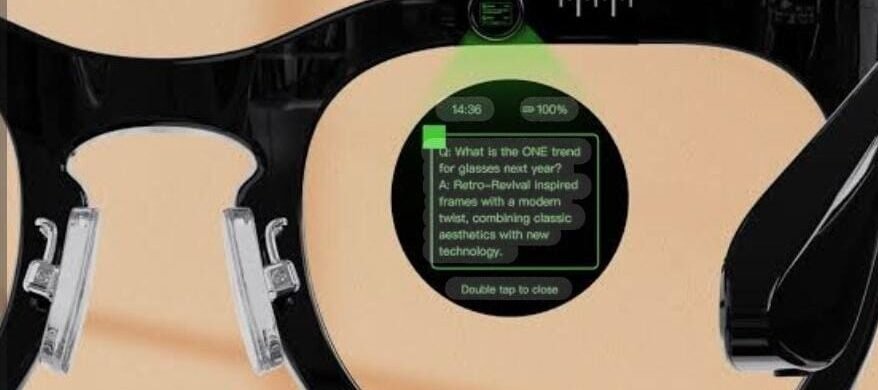What technology is used in smart glasses thodi? Smart glasses are a new type of wearable technology that combine conventional eyewear with cutting-edge connectivity and computing capabilities.
By integrating digital information directly into the user’s field of vision, these futuristic devices are intended to enhance human capabilities. Optics, electronics, artificial intelligence (AI), and wireless communication are among the technologies used in smart glasses.smart
An in-depth look at the main technologies that power smart glasses can be found here.
1. Technology for Displays
The display system, which enables digital content to appear within the user’s natural view, is at the heart of smart glasses. The most prevalent display types are
The most prevalent performance types:
Waveguide displays direct light from a projector to the eyes through a transparent medium. It enables a lightweight and compact design.What technology is used in smart glasses.
MicroLED or OLED Projection: These tiny projectors, which are frequently incorporated into the frame and project images directly onto the lens or onto a small screen in front of the eye, display images.
Lenses for Augmented Reality (AR): Some smart glasses use AR to overlay data on real-world environments, such as maps or notifications, making the information contextually aware and interactive.
2. Cameras and sensors Smart
glasses collect data from the real world using a variety of sensors and occasionally even cameras:What technology is used in smart glasses
An IMU (Inertial Measurement Unit) uses magnetometers, accelerometers, and gyroscopes to monitor head orientation and positioning. GPS:
Allows location tracking, which is particularly useful in applications that rely on navigation. Ambient Light Sensors: These sensors adjust the display’s brightness in response to the light in the surrounding area.
Cameras are used to take pictures, record videos, or make it possible for computer vision applications like real-time translation, object detection, and facial recognition.
3. Connectivity Highlights Smart
glasses must be able to connect to other devices and the internet in order to function as smart devices:
Bluetooth:Supports cloud services and streaming and enables direct internet access from the glasses.
5G and LTE: Some high-end smart glasses are compatible with cellular connectivity, allowing for seamless mobile data access.

4. Controls with Touch and Voice
Smart glasses primarily permit hands-free interaction.
This is accomplished by: Voice Assistants: Glasses can be controlled with voice commands thanks to integration with artificial intelligence (AI) programs like Siri, Google Assistant, or Alexa.
Built into the frame are touch sensors that let users swipe or tap to do things like adjust the volume or answer calls.
Gesture Recognition: For intuitive interaction, some models can recognize head or hand gestures.What technology is used in smart glasses
5. Audio Engineering Smart glasses frequently employ:
in place of conventional speakers. Bone Conduction Audio: This type of audio sends sound directly from the skull to the inner ear, leaving the ears open to other sounds.
Directional Speakers: Small speakers that are close to the ear project sound in a narrow beam, making it possible to listen in privacy without using earbuds.
6. Processing and Power The power behind smart glasses comes from small but powerful components:
Image processing, voice recognition, and application running are all handled by miniature processors. Batteries that can be recharged are usually built into the arms of the glasses and are designed to last for several hours on a single charge.
The device’s thermal management ensures that it remains cool and comfortable throughout extended use.What technology is used in smart glasses
Conclusion
Micro-displays, motion sensors, AI, and cloud computing are just a few of the advanced technologies that have come together to create smart glasses. Smart glasses are anticipated to become more powerful, lighter, and integrated into everyday life across industries, entertainment, healthcare, and education as these technologies continue to advance.
